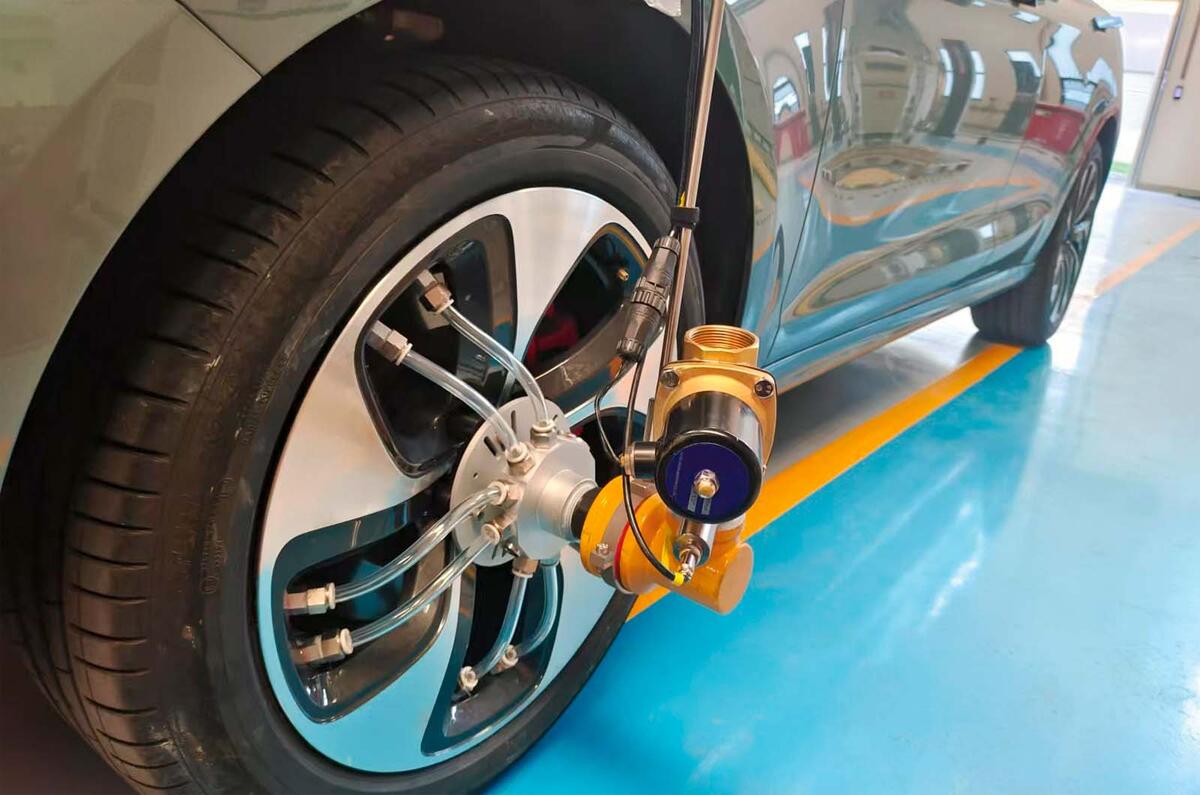Autonomous and semi-autonomous cars bring with them new methods of safety testing. What happens, for example, if a tyre deflates suddenly when the car is doing the driving rather than the human and how well will it cope?
US firm Koala Technologies has developed a new piece of equipment that enables a road tester to deflate a tyre by remote control from within the car. The kit meets the requirements of existing regulations, including the FMVSS 110 US federal standard.
Specifically, this US regulation is intended to ensure tyres have sufficient load-carrying capacity and are appropriate for the kind of use the vehicle gets. It also verifies that a tyre remains on the rim when it deflates at speed.
Koala Technologies’ new kit also meets the emerging standards for EV lateral stability tests with and without the motor engaged, which are already mandatory in some markets, such as China.
Called the Te.Sense Bloom, the kit is mounted to the wheel of a vehicle, which could be a car or larger, and has a central air ejector valve with a volume and flow capacity designed to emulate a sudden loss of pressure due to tyre failure.
The equipment is plumbed into the inside of the tyre by tubes and connectors screwed into the rim. When the operator presses a button, the valve opens, causing instant deflation, just as if the tyre suffered a real-world blowout.
The equipment is designed to be a reusable turnkey system that gives repeatable results.
Koala says the kit has a number of advantages over existing methods, which usually involve destroying multiple tyres. A traditional approach taken at proving grounds is to drive a vehicle so that two wheels on one side run over a series of aggressive ‘cleats’, which rapidly deflate and destroy a pair of tyres.
There are two problems with that. One is that stability tests may require one tyre to be deflated, leaving the other three intact, so deflating two on one side may not work for certain tests. The other is the cost and sustainability issue of trashing two tyres instead of one.
Te.Sense Bloom avoids that and can be installed on any corner of the vehicle. Although it involves modifications to one of the car’s rims to install the connectors and tubes from the central valve, Koala provides a wheel set-up service, if testers want it.
Rapid tyre deflation can be triggered from inside a vehicle or remotely and works with tyre pressures of up to 100psi and at up to 87mph.





Add your comment